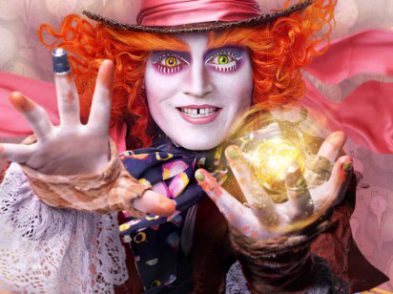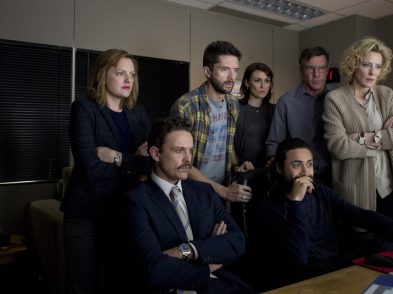Spike Lee’s Miracle at St Anna marks
something of a departure for the African American director normally associated
with highlighting racial tensions and the politics of racism in contemporary
urban American settings.
Miracle at St Anna derives from James McBride’s fictional recreation of the events of
August 12, 1944, when soldiers of the retreating 16th SS Panzergrenadier
regiment rounded up the remaining 560 refugees and villagers (mostly women,
children and older men) of the Tuscan village of Sant’Anna di Stazzema and
summarily executed them, later burning their bodies and razing the village.
The exact reasons for what has been described as ‘the
most egregious war crime committed by the Nazis on Italian soil’ (Jewish
Virtual Library) have divided historians: retaliation, according to the
official policy of reprisal, which provided that for every German soldier
killed by the Resistance, 10 civilians were to die; or a gratuitous,
unwarranted and unsanctioned act of intimidation by members of a poorly
disciplined occupying army in retreat. In 2005, an Italian military court in La
Spezia found 10 former members of the SS, all then still living in Germany,
guilty of participation in the massacre and sentenced them in absentia to life imprisonment. That it took so long to bring these war criminals to justice
is itself evidence of the lingering sensitivity to World War II that besets
Italians to this day. There have been numerous accusations over the years of a
cover-up on the part of Italian authorities in the interests of post-fascist
national unity and good relations with Germany.
Why then does it fall to an American writer and
filmmaker to tell the neglected story of the massacre of Sant’Anna di Stazzema?
At a recent press conference in Florence, McBride and Lee both made the point
that no Italian writer or filmmaker has dealt with the subject. Lee said that
in a random survey he conducted while filming in Tuscany in 2007, 7 out of 10
people questioned had never heard of the massacre. (He didn’t specify the
demographics of the survey, but the result speaks for itself).
McBride, somewhat defensively in the wake of
Italian critics accusing him of historical revisionism, stressed, ‘I’m a commercial
writer of historical novels. When I saw Sant’Anna I had to figure out a way to
bring this story to the world. This is a work of fiction and I had to create
elements that would allow the book to work. I wished very much that I could
write something that would bring these 560 victims back to life. So, looking at
the cross at the top of the church honouring Mary, God gave me a miracle
thought. I have all the respect in the world for the partisans, I can name
them, I know them, I know their stories, and what I wanted to show was that in
war anything is possible. Sant’Anna was there for 50 years before I visited
it…’
McBride’s and Lee’s combined interest was obviously in
the involvement in these events of the racially segregated 92nd Infantry Division (the ‘Buffalo Soldiers’), drafted into America’s army and
sent to Italy to fight Fascism. These troops, as the movie makes clear, were
called upon to sacrifice their lives for a nation that had failed to grant them
full citizenship and used them as cannon fodder in a white man’s war far away
from home.
Said Lee, ‘With the characters portrayed in this
film we want to demonstrate how the civil war in Italy divided families, when
one brother was fascist, one partisan. It was as simple as that. Another thing,
this story is about the intertwining of an African-American story and an
Italian story in World War II. Let’s please not forget African-American men
still considered second-class citizens in the US came to Italy to liberate you
[Italians] from the tyranny of fascism and Nazis. That’s what the film’s
about-no more, no less.’
It’s no coincidence that Miracle at St Anna references
a gung-ho John Wayne movie on television. The McBride-Lee angle is
transparent-and no less commendable for that-but it was the reactions of
representatives of the Italian Resistance, the partigiani, to the
movie that has exercised the Italian media in recent weeks.
Debunking partisan mythology wins automatic
disapproval and righteous outrage from the Italian public, or at least the public
that journalists imagine they are writing for. The fact that the Italian press
worked itself into hysteria is testimony merely to its shocking ignorance of
the country’s past (why think about the horrors of 60 years ago when you can
reflect more satisfactorily on the more distant and enchanting Renaissance with
its fruits still much in evidence everywhere you look?). The village of Sant’ Anna di Stazzema is tucked away in the Tuscan
hills and, like unpleasant history swept under the carpet, remains out of sight
and out of mind. The press take is something along the lines of an aggrieved
disdain for Lee’s treatment of the Partisans, more particularly for his daring
to suggest that there was not complete unity among the ranks and that-heaven
forbid!-betrayal, significantly fraternal betrayal, could and did happen, with
a variety of ideological and personal motivations.
It should be remembered that the partisans were not
legitimated by any authority, military or civilian, national or international.
By the very nature of their raison d’être they were guerillas fighting dirty.
Lee’s point in the movie (and it isn’t necessarily the central issue) is that
partisans are human beings with flaws. If ideologues of the left and other fantasists
and revisionists wish to shape them into infallible heroes, seeing only black
or white when there are usually more interesting shades of grey, then their
ignorance and romance far outdoes any fiction Lee and McBride may come up with.
Facts cannot be denied, and the fact is that it was the Allies, mostly the
Americans, who won the war for Italy, saving Italy from itself. The role of the
partisans was by definition marginal and relatively insignificant and for this
very reason subject to glorification and hagiography by revisionist romantics
especially on the political left.
Instead of exculpating Italian fascists and fascist
collaborators and glorifying the partisan Resistance, Lee, like Roberto
Rossellini in Roma città aperta (‘Rome, Open City’, 1945), chooses to
demonise the Nazis to the point of caricature, shifting the blame as it were,
and providing the counterweight to partisan heroics. Any attempt to explain the
actions of the Nazis is set aside. Lee sees it as simply too ghastly to try to
comprehend such acts of barbaric atrocity, so he lets the actions speak for
themselves in all their inexplicable horror. Unlike Rossellini, whose vision
was very different from Lee’s-he hoped for a Communist-Catholic alliance to
take Italy into the future-Lee’s aim is to tell a story and show graphically
the depravity of war and the way it affect individuals of whatever colour. In
addition, as is his wont, he rails against the prejudice and discrimination
that blighted societies then and still blight us now. If in the process Lee has
stirred up ancient antagonisms, fired up the hysteria of romantics and dreamers
and eventually provoked some kind of calm reflection, so much the better.
Comparison with the Taviani brothers’ take on
Fascism in Tuscany, La notte di San Lorenzo (‘The Night of the Shooting Stars’,
1982) is instructive. There, Partisan divisions are emphasised, italianità is divided between the angelic face of fascism and the banalities of
co-existence in a fractured society. That film above all questions history,
mythmaking and storytelling in a way that informs Lee’s film interestingly. As
in Schindler’s List and Saving Private Ryan, the exploration of a
microcosm throws light on the wider picture. How else is it possible to grasp
the incomprehensible magnitude of the countless strands of narrative that make
up what history calls World War II? If documentary realism is what is wanted,
an accumulated mass of dry facts will serve, but a fictional dramatisation as
powerful and involving as Miracle at St Anna is arguably a better way to
arrive at something like the truth. And the truth is that war sucks. Period.
And we shouldn’t get tired of reminding ourselves of this.
Miracle at St Anna is not without its flaws. It is overlong and there are some serious structural
and aesthetic lapses, especially the fey, paradisiacal finale. A supererogatory
subplot involves the detached head of the statue of Primavera from the Ponte
Santa Trinita in Florence that has seemingly totemic properties. The
relationship between the ‘chocolate soldier’ Train and the local boy, although
apparently platonic is nevertheless decidedly weird, and criticism could be
levelled at the use of American and Italian stereotypes, especially the local
village beauty whose attractive chest is not allowed to go unflaunted. The
scenes of the massacre itself are powerful and shocking, on a par with similar
sequences in Saving Private Ryan. The movie succeeds in its declared
objective.
More’s the pity then the Italian press reaction
misses the point that McBride and Lee were making about an episode in a much
wider context. Corrective, not revisionist is the operative word
for their combined intent here. Lee gives a salutary reminder that coming to
terms with your ugly past is a necessary purgative, and renewal and rebirth
really is the way to go. This was confirmed by the mayor of Sant’Anna di
Stazzema and a survivor of the massacre, who were present at the Florence press
conference: Lee has been made an honorary citizen of the village.
Said Lee, ‘I spent six months here making this film,
the crew was 95% Italian, I worked with wonderful Italian actors, we shot in
the beautiful hills and mountains of Tuscany. This whole experience of filming
has been a highlight of my twenty-year film career. And I feel this film is
definitely a true Italian-American co-production. This will not be the last
time I come to film in Italy. Let’s not let this be the last film on the
massacre and other massacres. Continue to explore your [Italian] history, as we
will do ours. And when they come together, it’ll be a good thing. Why should
Italy be unlike almost every country in the world? Racism is worldwide. I hope
it is a goal for everybody that we move forward from racism, sexism, every
other ism there is.’
Miracle at St Anna might just help
us to do that.







